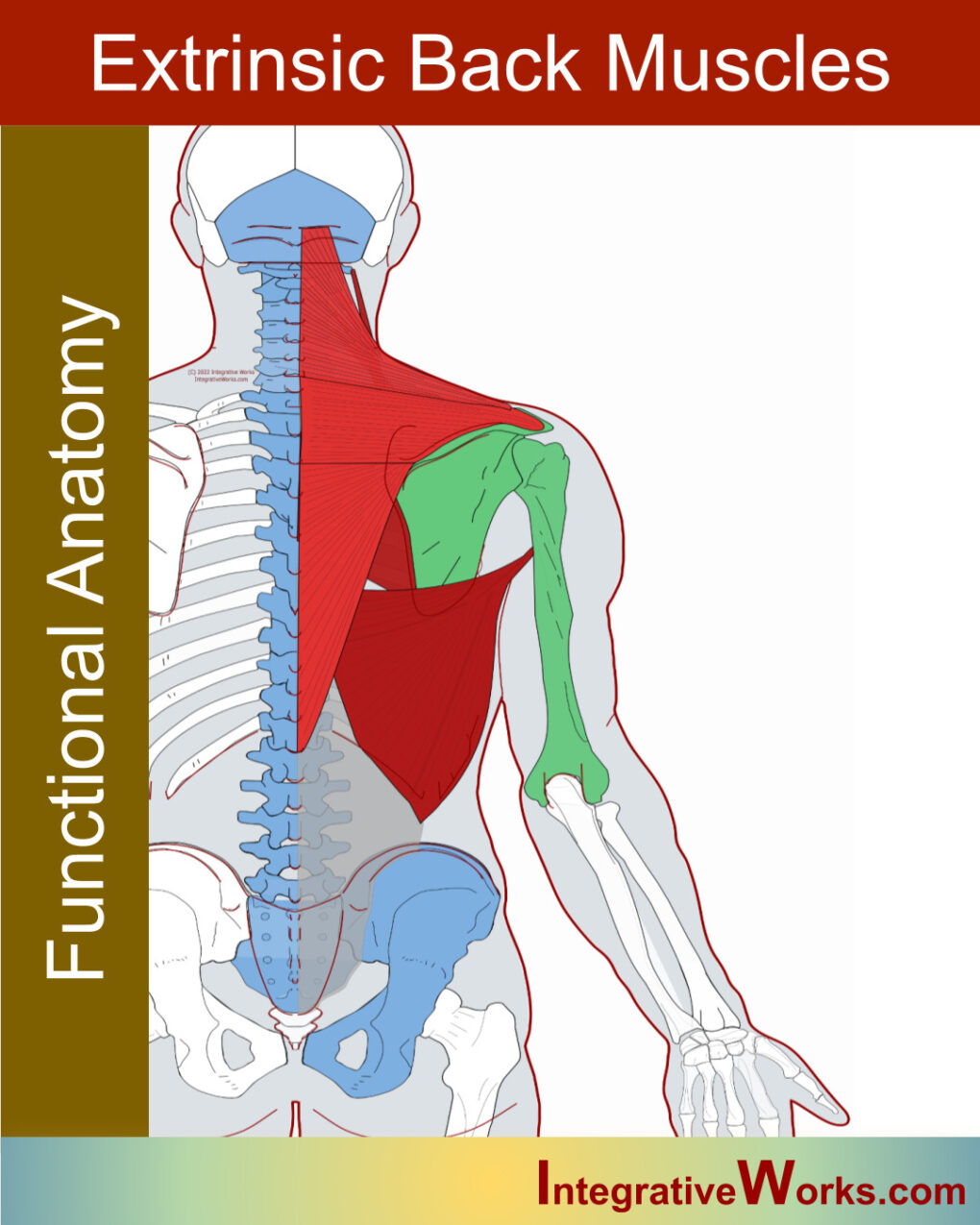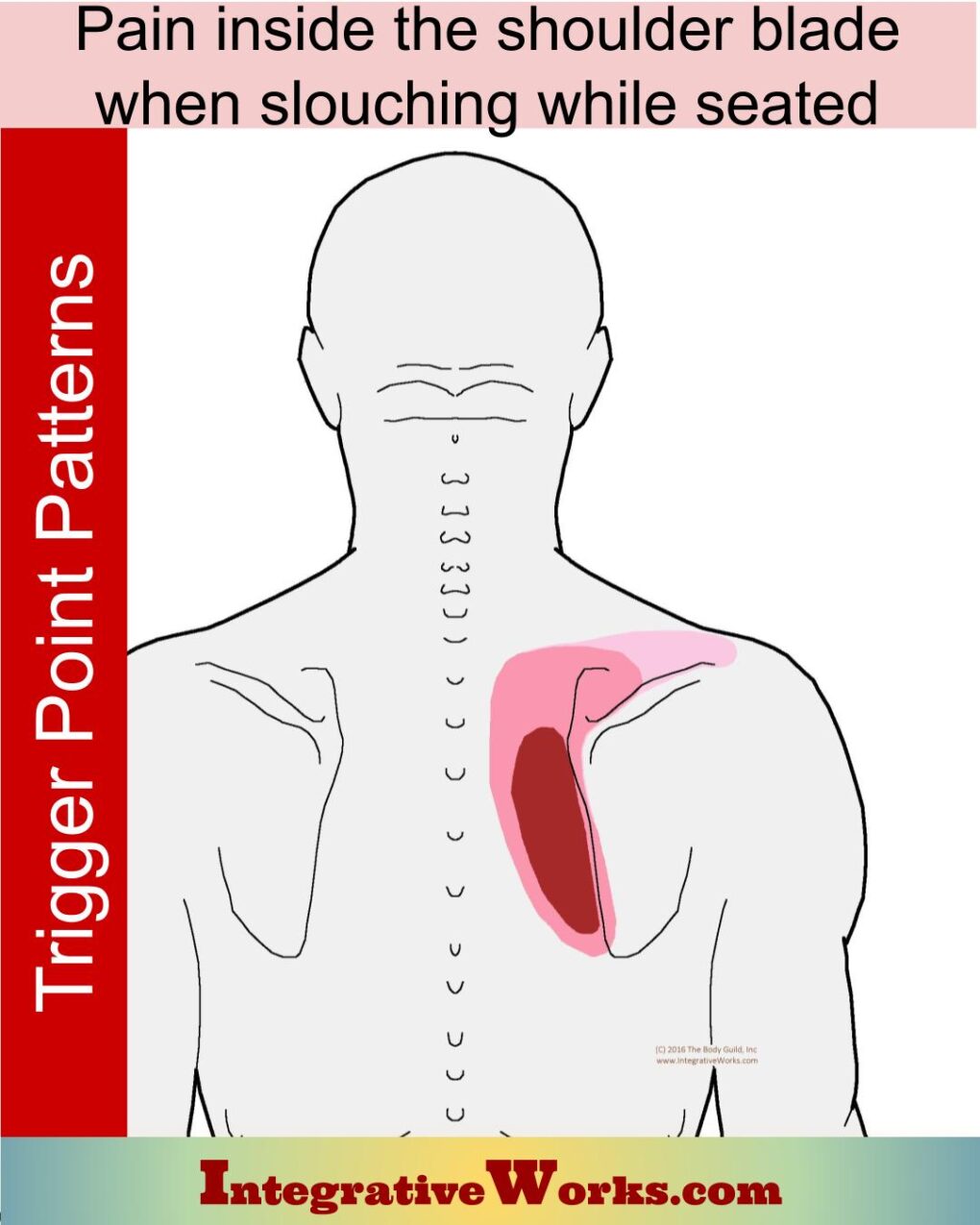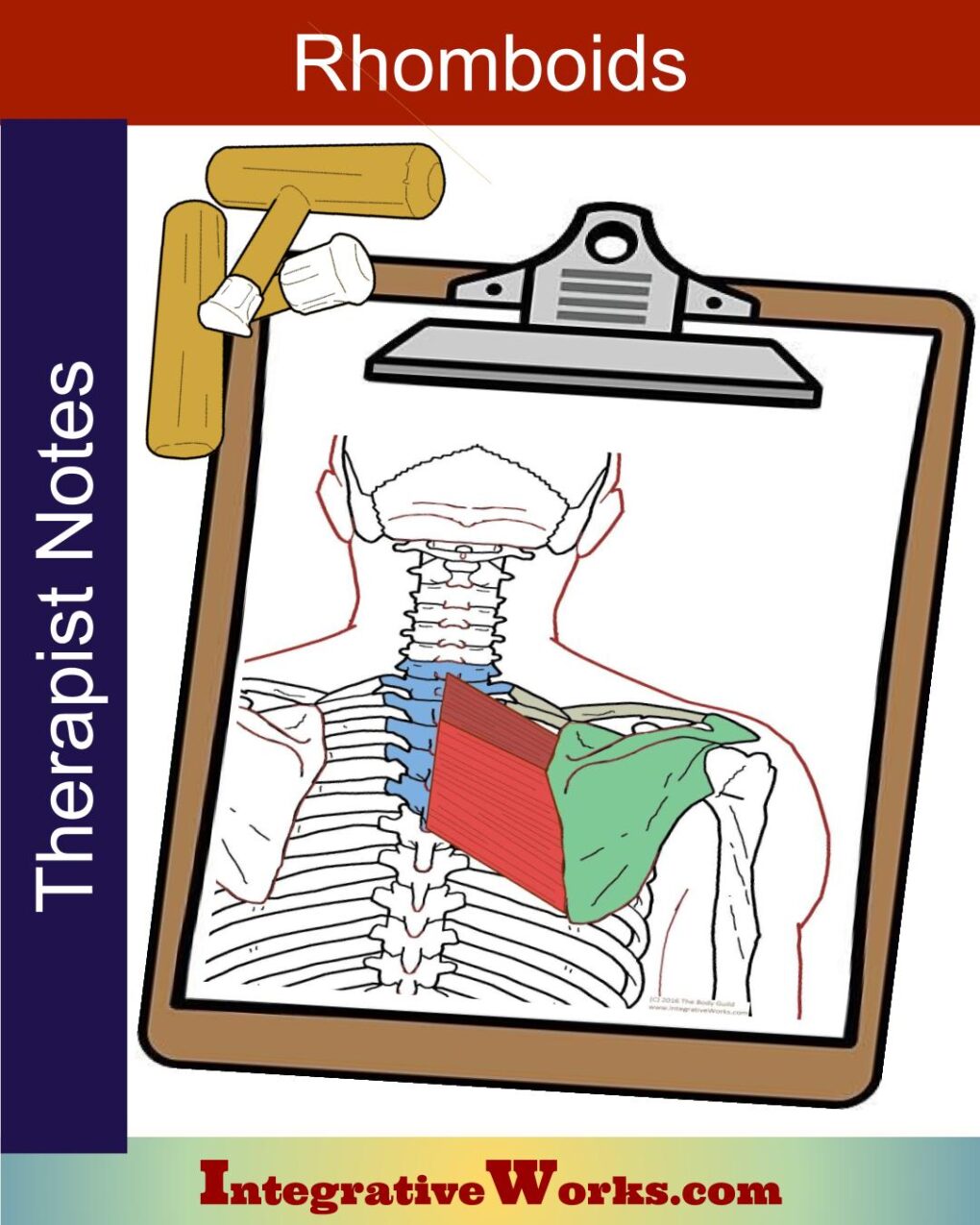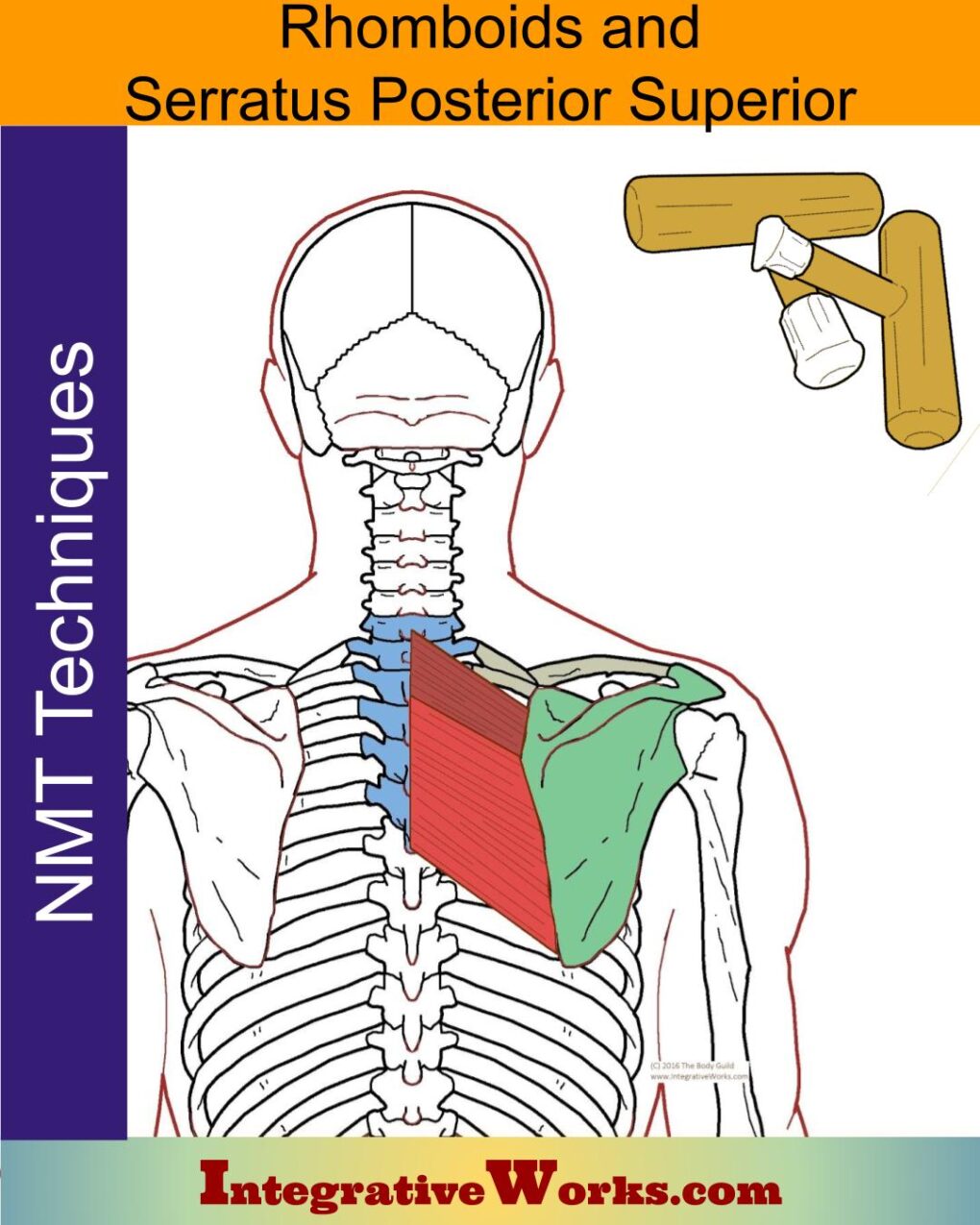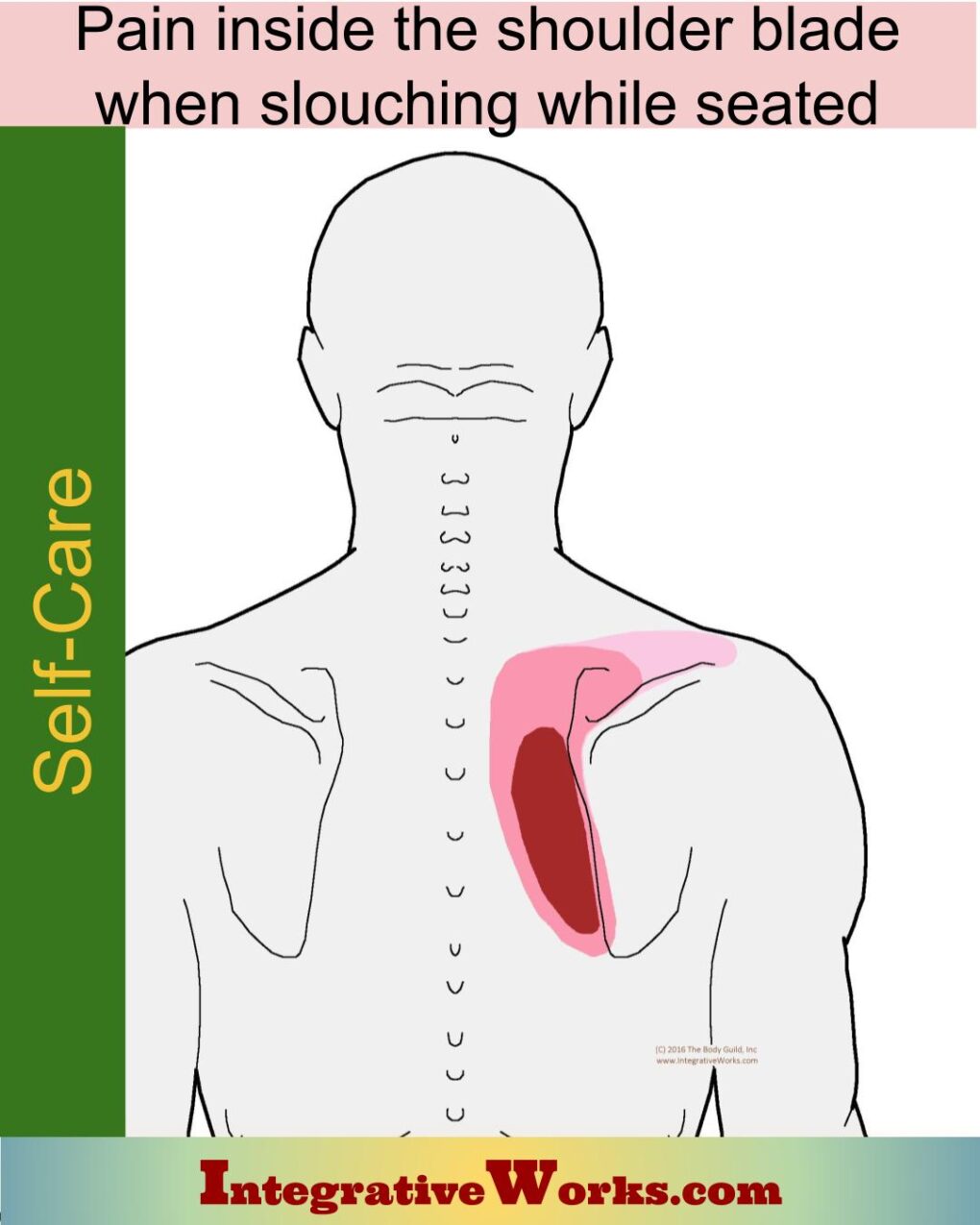Rhomboid Muscles
The anatomy of the rhomboid major and minor seems straightforward. These muscles attach the upper thoracic and lower cervical vertebrae to the scapula. Consequently, these muscles trap the ribs, sternum, and clavicle between their attachments.
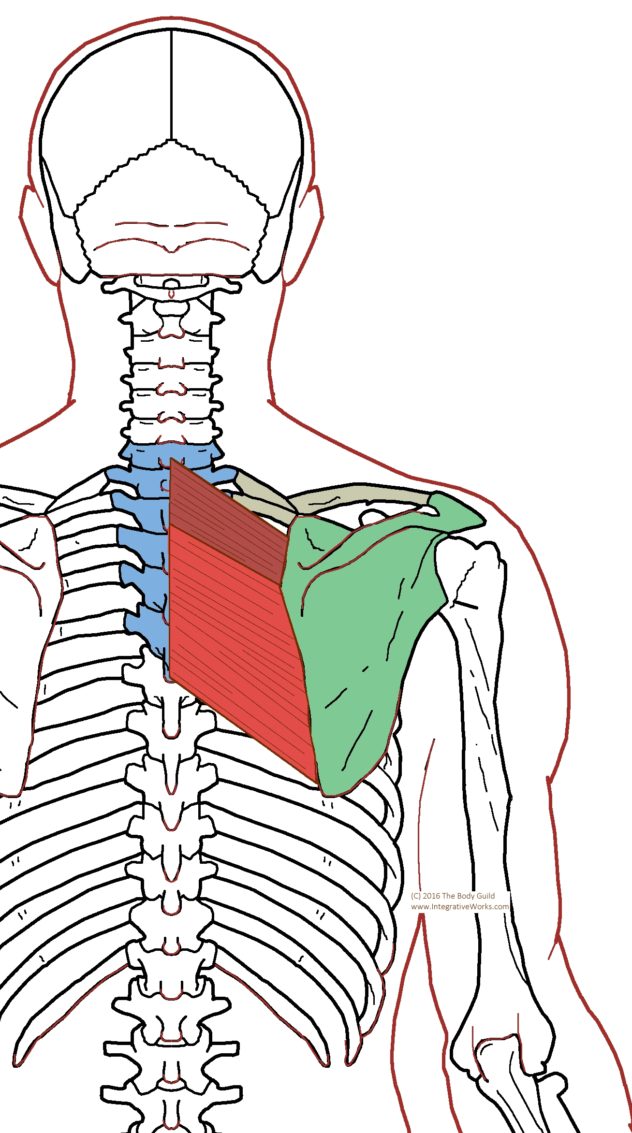
The Musculoskeletal Anatomy Behind Your Pain
Rhomboid Minor
Origin
- the lower nuchal ligament, the supraspinous ligaments, and spinous processes along C7 and T1.
Insertion
- the medial border of the scapula near the root of the spine of the scapula
Function
- retraction of the scapula, assist in downward rotation of the scapula, stabilizes scapula during flexion and abduction
Rhomboid Major:
Origin
- the supraspinous ligaments, and spinous processes along
Insertion
- the medial border of the scapula near the root of the spine of the scapula
Function
- retraction of the scapula, assist in downward rotation of the scapula, stabilizes scapula during flexion and abduction
The rhomboid major and minor are usually thought of as retracting the scapula. Surprisingly, they are very active in stabilizing the scapula during abduction and flexion of the humerus. These muscles also retract and stabilize the scapula in labored breathing. There are no statistically significant variations other than occasionally being fused into one muscle.
Innervation
- C4-C5 – dorsal scapular nerve
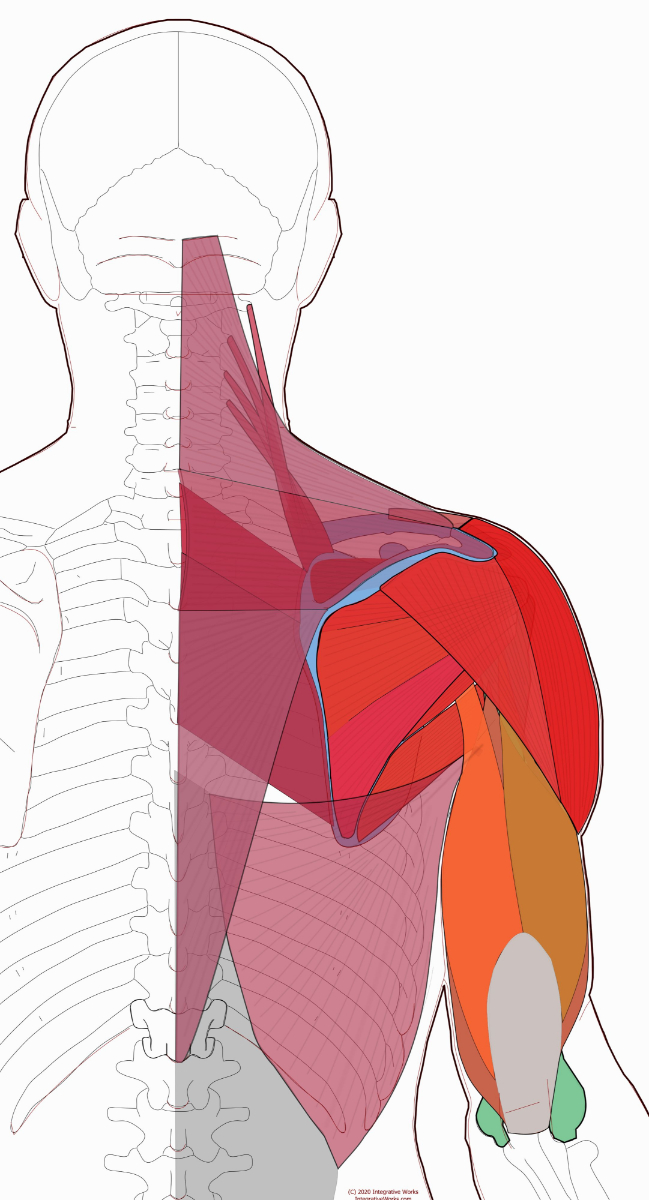
Attachment Details
The anatomy of the rhomboid major and minor seems straightforward. These muscles attach the upper thoracic and lower cervical vertebrae to the scapula. Consequently, these muscles trap the ribs, sternum, and clavicle between their attachments.
Details of Function
This picture shows the rhomboids with the other extrinsic back muscles (purple). They suspend the scapula and clavicle, which provides a platform for operating the upper extremity. Consequently, the scapulohumeral muscles (red) suspend and move the humerus.
The rhomboid major and minor are usually thought of as retracting the scapula. Surprisingly, they are very active in stabilizing the scapula during abduction and flexion of the humerus. These muscles also retract and stabilize the scapula in labored breathing.
Anomalies, Etc.
The studies that were reviewed didn’t reveal any statistically significant variations, other than occasionally fused into one muscle.
Wikipedia entry for Rhomboid Minor. Wikipedia entry for Rhomboid Major.
Posts Related to Rhomboid Major and Minor
Extrinsic Back Muscles – Functional Anatomy
Pain Between Shoulder Blades When Slouching
Rhomboid Major and Minor – Massage Therapy Notes
Rhomboids & Serratus Posterior Superior – Neuromuscular Massage Protocol
Self Care – Pain Between Shoulder Blades When Slouching
Support Integrative Works to
stay independent
and produce great content.
You can subscribe to our community on Patreon. You will get links to free content and access to exclusive content not seen on this site. In addition, we will be posting anatomy illustrations, treatment notes, and sections from our manuals not found on this site. Thank you so much for being so supportive.
Cranio Cradle Cup
This mug has classic, colorful illustrations of the craniosacral system and vault hold #3. It makes a great gift and conversation piece.
Tony Preston has a practice in Atlanta, Georgia, where he sees clients. He has written materials and instructed classes since the mid-90s. This includes anatomy, trigger points, cranial, and neuromuscular.
Question? Comment? Typo?
integrativeworks@gmail.com
Follow us on Instagram

*This site is undergoing significant changes. We are reformatting and expanding the posts to make them easier to read. The result will also be more accessible and include more patterns with better self-care. Meanwhile, there may be formatting, content presentation, and readability inconsistencies. Until we get older posts updated, please excuse our mess.

